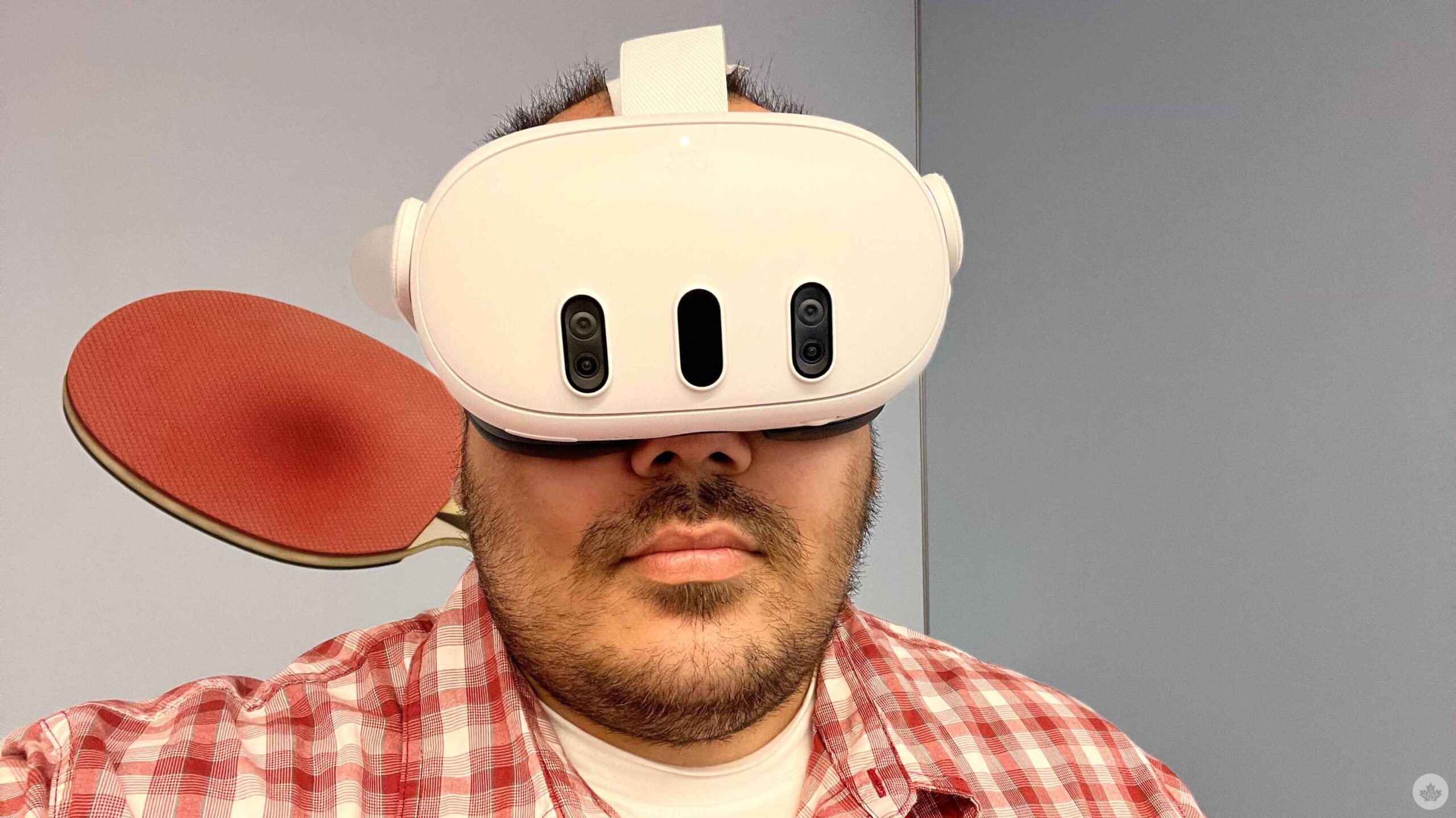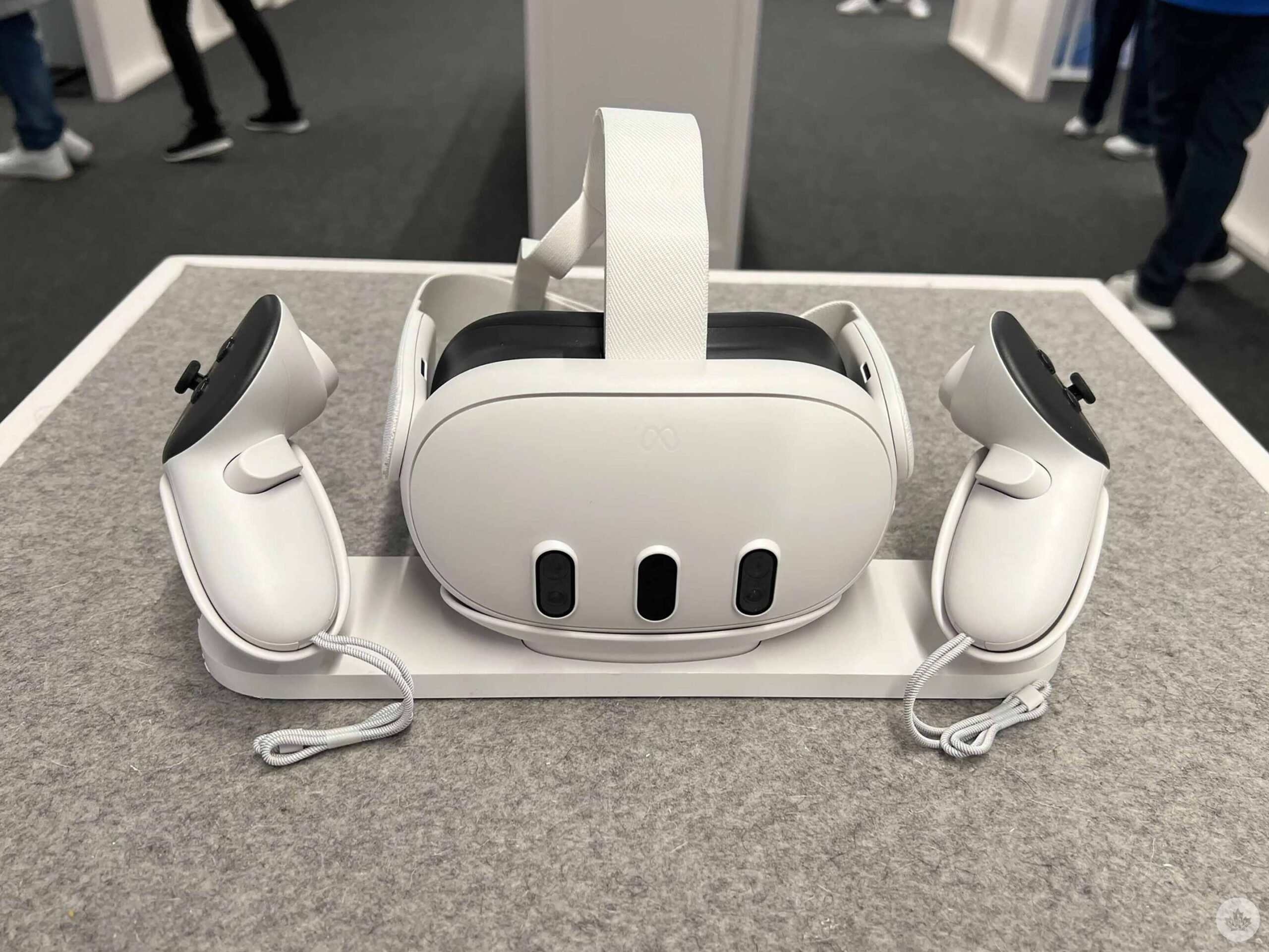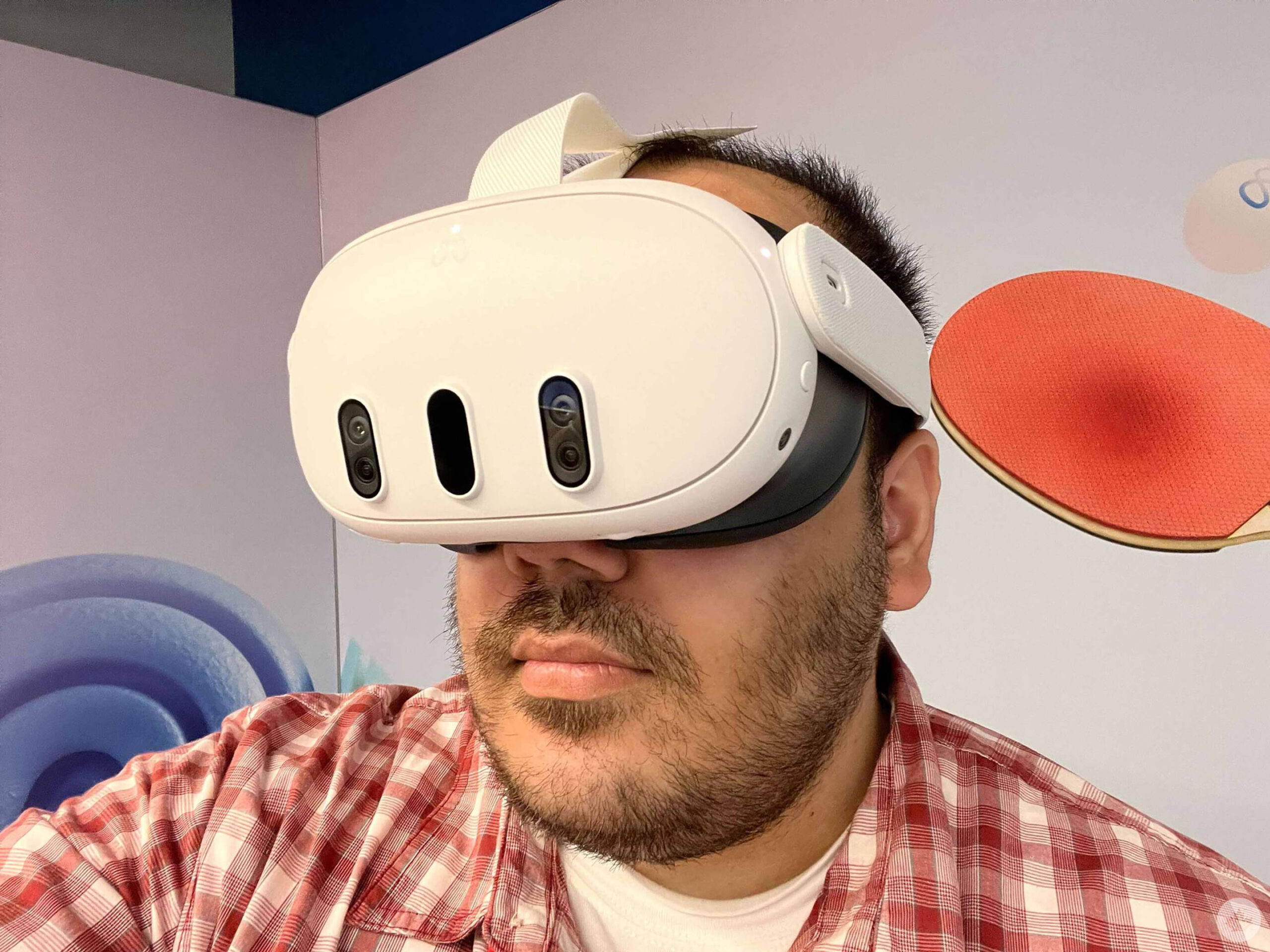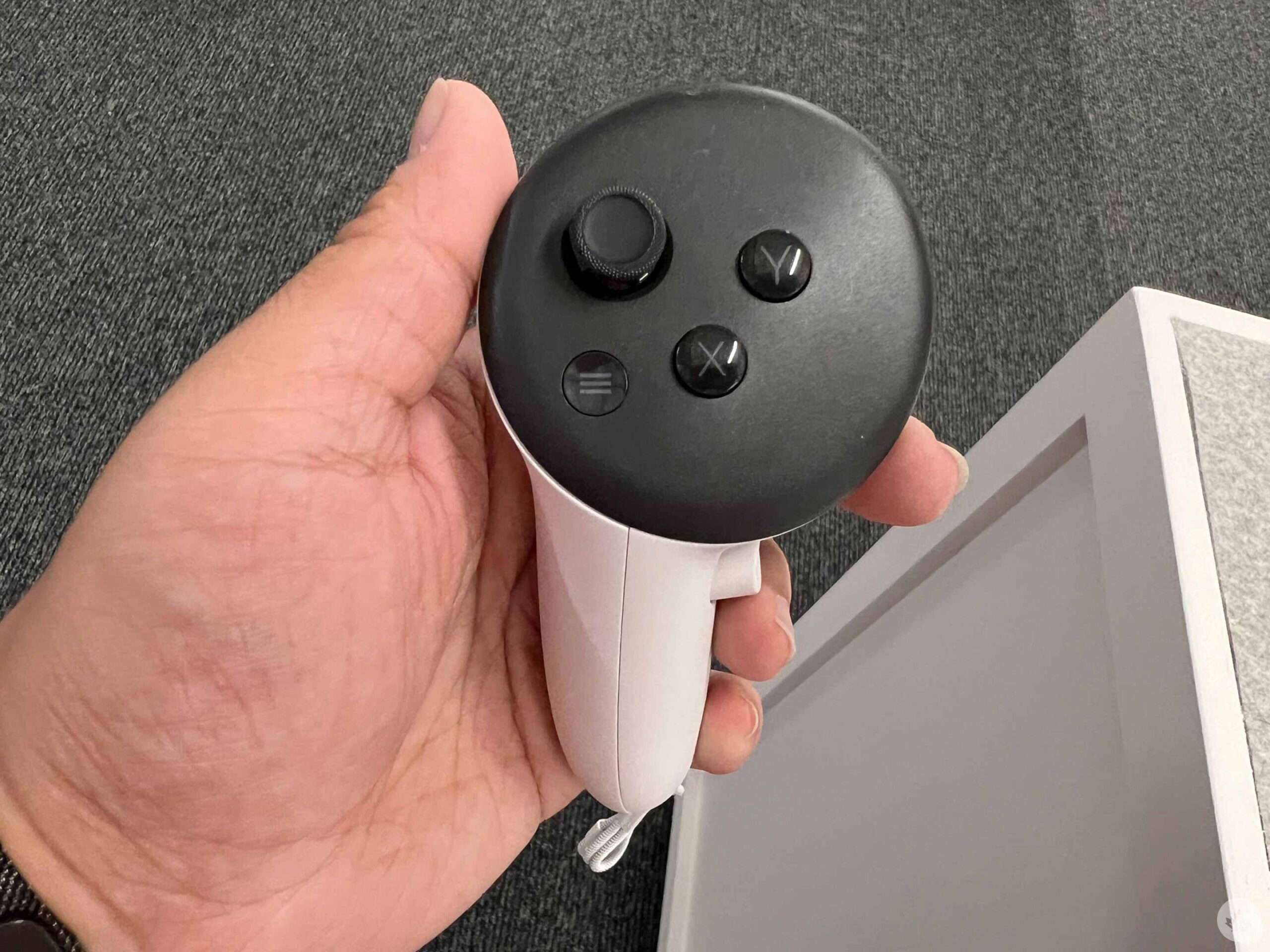
By and large, VR is a fairly isolating experience. Sure, there’s fun to be had when you get to watch friends and family try the tech, especially if they’re newcomers, and apps like VRChat are obviously intended for socialization. But on the whole, it’s really just you and the headset, particularly if you’re going for more immersive experiences.
Mixed reality (MR), however, has the immense potential to bridge the gap between the individual VR experience and your surroundings. It’s for that reason that I’ve been much more interested in Meta’s latest VR device, the Quest 3. As Meta has been touting throughout its whole Meta Connect conference, the Quest 3 is the first “mainstream” VR device to offer MR functionality. Other headsets, such as Microsoft’s HoloLens, are higher-end, pricier and more enterprise-focused.
 And after getting to demo the Meta Quest 3 at Meta Connect, I’ve come away quite impressed with the whole experience. To be clear, I only tried seven games and experiences, so any of the productivity-related features, like Microsoft Teams or social apps like Horizon Worlds weren’t available.
And after getting to demo the Meta Quest 3 at Meta Connect, I’ve come away quite impressed with the whole experience. To be clear, I only tried seven games and experiences, so any of the productivity-related features, like Microsoft Teams or social apps like Horizon Worlds weren’t available.
Using the headset and controllers themselves
What I can say, right off the bat, is that the Quest 3 is the most comfortable premium VR headset I’ve ever used. For one, it’s 40 percent thinner than its predecessor, and you really do feel that weight difference. What’s more, the Quest’s intuitive soft strap fitting system returns, which I find is a smoother way to adjust tightness and placement compared to the harder shell, dial-based setups like the PS VR2’s. (As with previous Quest models, you can pay extra for an ‘Elite’ plastic wrap with a dial, but I actually do prefer the default straps.)
Outside of the lighter weight, the biggest improvement with the moment-to-moment use of the headset is the new full-colour passthrough. I first experienced getting to use such a feature — which allows you to see through a VR headset without taking it off — with the PS VR2, but that was all in black and white. While certainly not full high-definition, the Quest’s ability to have full colour and reasonable quality — enough that I can fully make out faces and even my phone screen — is so handy.
 Elsewhere, the new Touch Plus controllers feel like a more minor refinement over their predecessors. Beyond removing the strange rings surrounding them, which I was never really fond of anyway, the button layout is the same. Meta says the Touch Plus controllers also have a more “ergonomic form factor,” but I can’t say I recall feeling any meaningful difference from the Quest 2. Still, the original design worked well, so I’m happy to see these controllers have largely remained the same.
Elsewhere, the new Touch Plus controllers feel like a more minor refinement over their predecessors. Beyond removing the strange rings surrounding them, which I was never really fond of anyway, the button layout is the same. Meta says the Touch Plus controllers also have a more “ergonomic form factor,” but I can’t say I recall feeling any meaningful difference from the Quest 2. Still, the original design worked well, so I’m happy to see these controllers have largely remained the same.
The games and experiences
Once I got everything put on, I was directed to play First Encounters, well, first. It’s a simple game, but that also makes it an appropriate starting point. In this MR experience, little fluffy creatures resembling the soot sprites from Spirited Away start breaking through the walls and running amok in the real world. Using the two motion controllers, you have to shoot each one of them to capture them and automatically send them to a little collection device. You get extra points for blasting them in colour groups, Match-3 style, but otherwise, this didn’t feel unique enough, even with the MR novelty, from any of the VR shooters I’ve played. That said, VR newcomers will definitely get more out of this.
The MR demo that did win me over, however, was Stranger Things VR, and that’s coming from someone who never got into the eponymous Netflix show. It’s all set from the perspective of Vecna, and even though all I know about that villainous character is his name, I appreciated how trippy and unique that approach ends up being. For the purposes of my demo, I was told to put down the Touch controllers to use the Quest 3’s hand-tracking functionality, and it worked exceptionally well. At first, this saw me lifting slugs with telekinesis, pulling them towards me and then making a fist, all using just my bare hand. The other hand, meanwhile, had a contraption on it that allowed me to open portals into the Upside Down, with winged creatures flying out of the hellish dimension.
Being able to move in the real world to peer through the portals was wicked, and it’s easy to see how that feeling would be enhanced in your own home, a place of familiarity, versus the nondescript Meta HQ room I was in. And on a base level, the power fantasy of being able to use telekinesis — with surprisingly accurate hand-tracking, no less — is absolutely engrossing. Thinking outside the box to use MR in ways like this that transcend mere shooting galleries is what will ultimately make the Quest 3 really stand out.
Hand-tracking works quite well on Meta Quest 3.
Another novel MR experience was Lego Bricktales. This is a game that was released on consoles and PC over the past year, but it’s one that is absolutely enhanced by the Quest 3’s MR. While it can be played in standard VR, I found the MR setting more compelling since it creates a Lego building table directly in your play area that you hover above. From there, you can rotate and resize it as needed, and then actually manipulate the bricks to build what’s on-screen. You also have a minifig character you control in little diorama-esque Lego environments that shake up the building segments. All told, this made me feel like (a far less intelligent) Tony Stark, standing in a regular space while manipulating holograms and constructing new ones like some Master Builder.
But of course, MR is optional and, in some cases, not supported, so I made a point of trying those games as well. In Les Mills Bodycombat, an otherwise engaging exercise experience, I didn’t feel like MR really added anything, and even preferred the almost cyberpunk-esque backdrop of the VR mode as I threw out my jabs. Roblox VR, meanwhile, brings the popular game creation platform to Quest, but not in MR. Admittedly, Roblox isn’t my thing, but I still absolutely appreciate how big of a deal having this in VR is for the Quest, and the variety of games I sampled (like a first-person indoor playground shooter and an airship turret gallery) seems strong.
 But the best showcase for the Meta Quest 3’s beefier VR gaming capabilities was definitely Red Matter 2. I’ll confess that I have no prior knowledge of the first spacefaring puzzle-adventure game, nor did my preview offer any indication of what the story will be in the sequel. Instead, it’s positioned as a tech demo for the Quest 3’s new Qualcomm Snapdragon XR2 Gen 2 processor — twice as powerful as its predecessor — and improved 2,064 x 2,208 pixel resolution-per-eye LCD screens. Essentially, the demo was a walking simulator, allowing you to casually explore a few floors of a ship and play around with the realistic physics and, more importantly, the visuals.
But the best showcase for the Meta Quest 3’s beefier VR gaming capabilities was definitely Red Matter 2. I’ll confess that I have no prior knowledge of the first spacefaring puzzle-adventure game, nor did my preview offer any indication of what the story will be in the sequel. Instead, it’s positioned as a tech demo for the Quest 3’s new Qualcomm Snapdragon XR2 Gen 2 processor — twice as powerful as its predecessor — and improved 2,064 x 2,208 pixel resolution-per-eye LCD screens. Essentially, the demo was a walking simulator, allowing you to casually explore a few floors of a ship and play around with the realistic physics and, more importantly, the visuals.
The latter is key because Red Matter 2 launched last year on Quest 2, but the Quest 3 version looks significantly better. To that point, the demo even had a Halo 2 Anniversary-esque toggle that lets you view the old resolution to immediately compare it to the new glossy sheen. By pressing this button, what was once a little grainy and jagged became crisp and detailed. It’s quite the glow-up. I was particularly impressed with how windows have realistic little smudges and marks on them to denote, while photographs even carry fingerprints. Overall, this is definitely an effective tech demo for the Quest 3’s improved specs.
On the whole, though, my favourite demo would have to be Assassin’s Creed Nexus VR. It’s a brand-new AC experience built from the ground up for VR that features three returning AC characters: Ezio (II), Connor (III) and Kassandra (Odyssey), all voiced by their original actors (Roger Craig Smith, Noah Watts and Melissanthi Mahut, respectively). In the demo, I got to play an Ezio mission in which I tracked down a shady man. In terms of mission design, it was a fairly standard “tail a target without being seen,” but what took me aback was how cool it felt to be in ancient Rome in VR.
Truthfully, the resolution wasn’t that great, but it was still impressive to see an open-world in which I’d spent many hours in the Ezio trilogy on consoles from such a different perspective. Even something as automated as running and shoving a civilian in the main AC games feels more engaging now since you’re now up close and in their face. All the while, hearing the excellent Roger Craig Smith back as Ezio in the headset, almost as if they were my own thoughts, only further immersed me.
Then there’s the actual climbing. Yes, jumping between balance beams and buildings is automated like it is in the console/PC games (holding the jump button), but I think that streamlining is necessary for a smoother VR experience. On the flip side, actually scaling structures involves you reaching out and grabbing handholds. I’ve played some VR games that allow this full motion-controlled climbing, like the PS VR2’s Horizon Call of the Mountain, but these all have you using specially marked handholds. In Nexus VR, every ledge on a building that you can grab in a regular AC game can also be held here. It really does create that feeling of a playground, where you can go up and down at will, and it doesn’t feel nauseating at all.
I didn’t have enough time to get to a combat section (the tailing mission frustratingly went on longer than expected), but so far, it seems to offer cool first-person swordplay and tools like crossbows and smoke bombs. Of course, I’ll have to reserve final judgment, but for now, it looks promising, and if nothing else, the signature AC parkour feels better than ever through VR.
Closing thoughts
Once again, my experience with the Quest 3 was limited to a handful of games, so I can’t speak to the quality of the broader library. For context, Meta is planning over 100 new games and apps to be available on Quest 3 by the end of the year, on top of backwards compatibility for older Quest titles. However, Meta has also confirmed that none of these titles will be exclusive to Quest 3, so Quest 2 owners can be rest assured that they’ll be able to play the same games until at least 2024. Of course, the mixed reality functionality in select titles helps differentiate the two headsets, but on the whole, I’m not sure if those who have the last-gen model will want to immediately upgrade.
On the flip side, it’s far easier to recommend the Quest 3 if you don’t have a Quest 2. Having all of the older titles, with new resolution upgrades like Red Matter 2 or MR features like Stranger Things VR, makes it a good jumping-on point. I’m excited to see what other MR experiences will be available. Plus, knowing that Microsoft’s large Game Pass catalogue is coming to Meta Quest via Xbox Cloud Gaming in December only sweetens the deal. I largely sat out the Meta Quest 2 era, but given everything I’ve mentioned, I’m rather looking forward to jumping into the Quest 3.
The Meta Quest 3 can be pre-ordered Meta’s website. The 128GB model is priced at $649, while a 512GB model costs $849.99. Asgard’s Wrath 2, which is releasing on December 15th, will also be offered for free with the purchase of a Quest 3.
MobileSyrup may earn a commission from purchases made via our links, which helps fund the journalism we provide free on our website. These links do not influence our editorial content. Support us here.


